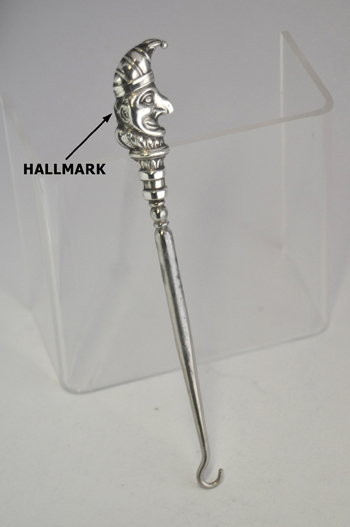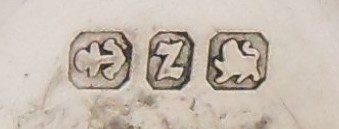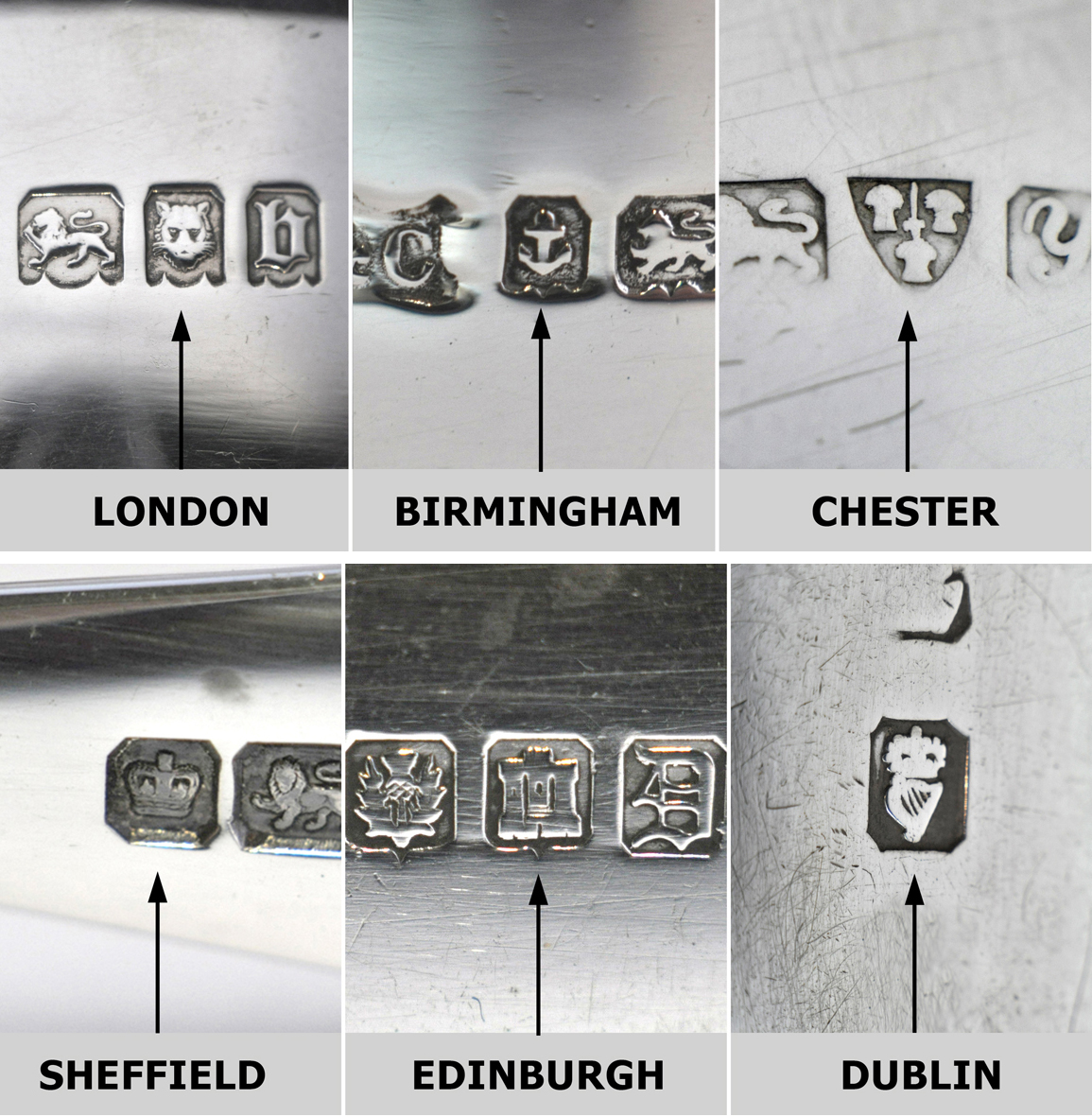Investigating silver hallmarks
Silver is never completely pure. Like gold, it is a soft metal and needs to be mixed with other metals to make it stronger. In Britain, the most common grade of silver is 925 or ‘sterling silver’, so-called because it is 925 parts per thousand silver, the other 75 parts being other metals. There is another grade of silver for British pieces: Britannia, which is 958 parts per thousand silver and has a different symbol. There are also different grades and symbols for other countries but we will be focusing on identifying British sterling silver.
To ensure that a piece has the correct amount of silver in it, it is sent to an assay office where the piece is tested and stamped with a hallmark. Hallmarking is probably the oldest form of consumer protection, dating back to the 1300s! Great Britain is lucky to have one of the best hallmarking systems in the world, so it is possible to date and identify the maker of a piece of silver and the town where it was assayed.
Silver hallmarks help identify who made your piece, what grade of silver it is made from, the age and where it was hallmarked. If you have some pieces you wish to identify, here’s a brief guide to reading hallmarks.
What to look for on your piece: first you need to find your marks. Sometimes they will be quite obvious, on the back of cutlery or on the base of an item, but sometimes they are hidden within a pattern so you may need a magnifying glass to hunt for them. Once you have found them it’s time to identify them.
On this button hook the hallmark is well hidden, just behind the ear. 

Once you have located the hallmarks, then we can start to identify them.

The most important symbol to look for is the lion passant (4), which identifies the purity of your piece is sterling silver.
Now look for the town hallmark: in this photo we see the anchor denoting it was assayed in Birmingham (3). In this case the letter ‘z’ (2) indicates it was assayed in 1874. The date letter changes every year so you can precisely date the year it was made. The maker’s mark (1) shows that it was made by Robert Thornton. The last mark (5) the Sovereign Head, in this case, is Queen Victoria, showing the duty has been paid. Some letters can look similar so you can use the maker’s mark or duty mark to verify age. The Queen Victoria duty mark stopped in 1890.
In the images below both have the letter ‘Z’, the top image is 1899 and the bottom image is 1924. As neither of them show the Sovereign Head Duty Mark, they must be post 1890.


When investigating your hallmark you can also look at the maker’s mark for an indication of date by looking up when their mark was registered. https://www.silvermakersmarks.co.uk/index.htm is a useful site to help identify your makes marks.
Here are some examples of other town marks you may find on your pieces:

Silver plate
Silver plated pieces are made from base metal which can be nickel or copper with a layer of silver applied. These can also have markings that look a bit like hallmarks. Look out for the letters EP or EPNS which stand for electro plate or electro plated nickel silver. It may also have the marking A1 or B1 which denote for the quality of the silver plate.
It is also a good idea to look for signs of wear. Silver will tarnish and may have grey or black marks but underneath if you polish it, it will return to a shiny surface. With silver plate you may be able to see a yellow hue to the metal where the base metal is beginning to show through the layer of silver. This usually occurs where the silver has been worn away by repeated cleaning.
Silver plate can also have markings that look a bit like hallmarks. Look out for the letters EP or EPNS which stand for electro plate or electro plated nickel silver. It may also have the marking A1 or B1 which denote the quality of the silver plate.
Here are some examples of silver plated marks:

There is some great information about identifying silver plate marks on the website https://www.silvercollection.it/dictionarydecryptingsilverplatemarks.html
We hope you have enjoyed reading our little insight into the big world of hallmarks.